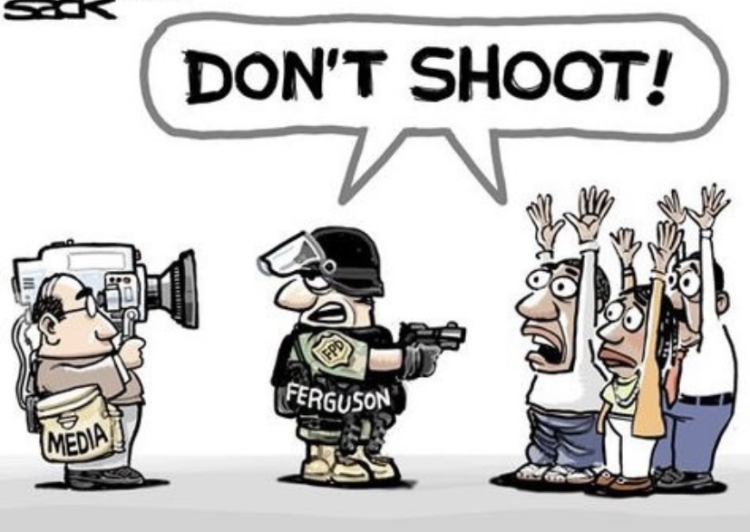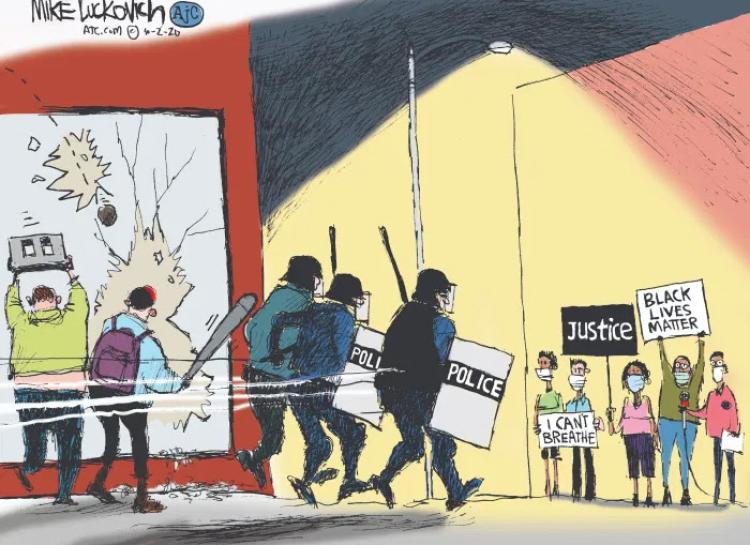Exploring Protest Movements & Black Lives Matter - An L2 Oral Skills Course
Black. Lives. Matter.
Author: Ella Steckler
Course: LING 4260 - L2 Oral Skills
Advisor/Professor: Raichle Farrelly
LURA 2021
The movement for Black lives is not new, but recent surges in violence against Black people has led to action in the last few years. According to the Black Lives Matter site, the movement “is an ideological and political intervention in a world where Black lives are systematically and intentionally targeted for demise. It is an affirmation of Black folks’ humanity, our contributions to this society, and our resilience in the face of deadly oppression.”
In Professor Farrelly’s course on Teaching Second Language Oral Skills, students are challenged to develop a unit for an English language classroom based on a social justice issue. The units are designed for an open educational resource (website) for use by teachers who hope to grapple with social justice issues in their classrooms. The units consist of activities for students to practice listening, speaking, and pronunciation skills in context. (Explore the site here.)
The tragic deaths of George Floyd, Breonna Taylor, and countless other Black people at the hands of law enforcement influenced my group to construct a unit on the Black Lives Matter (BLM) movement. We wanted to create a unit promoting awareness around systematic racism. This is an important topic, especially for students learning English and studying American culture.
Our unit consists of three lessons focused on a topic that both educates students on the movement and sparks critical thinking that can be applied outside the classroom. The lessons are: “The History of the Movement,” “The Issues of Today,” and “Protests and Violence.”
In our first lesson, we introduce the roots of the movement because students may not have a full understanding of the subject. These units are for learners around the world, and establishing context in these lessons demonstrates a key TESOL principle -- namely, building on students' existing background knowledge and prior experiences.
One activity on the history of the BLM movement is a timeline activity to practice listening comprehension. Students watch a video about the origin of the BLM movement and organize flashcards with key events in chronological order. In doing so, students are able to demonstrate comprehension and metacognitive skills, like self monitoring. Another goal of this activity is to have students name prominent legal cases in the early history of the BLM movement. This activity allows students to practice listening skills while building their knowledge base about prevalent issues in the US. Throughout the unit, students will build upon this background knowledge as they spark discussions and form opinions about the BLM movement.
In our second lesson called “Issues of Today”, we created an activity where students create their own PSA about a case using Adobe Spark, a digital storytelling tool. For this activity, students are asked to research a specific case that contributed to the BLM movement and make their own 1-3 minute long PSA to present to the class. The objectives of this activity are to have students research an instance of violence against a member of the Black community in the U.S, present the narrative of the victim who experienced racism, and describe the public response following the incident. They conclude their PSA with an effective public service announcement about the BLM movement. This activity promotes skills in English pronunciation and vocabulary while also providing students with knowledge of a specific case of the BLM movement. Another TESOL principle is to scaffold student learning with clear guidelines and models. We created this video as an example of what their video might be like.
In our final lesson plan, we created an activity focused on encouraging students to discuss a particular issue of the BLM movement. Students receive a political cartoon and have 10 minutes to explain the picture, its implications, and their opinions on the ideas discussed with a partner. These cartoons cover issues ranging from biased media coverage, rioting, and “All Lives Matter” counter protests. This activity promotes English conversation practice as well as gives students an opportunity to express their interpretation of BLM artwork and provide their opinions on these issues.

Overall, this unit encourages students to practice oral skills like listening, speaking and pronunciation in English while also providing students with cultural background knowledge on a core social justice movement in the U.S.. Our hope is that students would conclude this unit with greater awareness of social justice issues in the U.S. today, and be prepared to express their opinions and take action for the causes of the BLM movement, thus sparking change in our communities.



